Volume 14, Issue 1
Displaying 1-11 of 11 articles from this issue
- |<
- <
- 1
- >
- >|
-
1970 Volume 14 Issue 1 Pages 1-8
Published: 1970
Released on J-STAGE: April 18, 2008
Download PDF (1967K) -
1970 Volume 14 Issue 1 Pages 9-13
Published: 1970
Released on J-STAGE: April 18, 2008
Download PDF (722K) -
1970 Volume 14 Issue 1 Pages 15-25
Published: 1970
Released on J-STAGE: April 18, 2008
Download PDF (3638K) -
1970 Volume 14 Issue 1 Pages 27-39
Published: 1970
Released on J-STAGE: April 18, 2008
Download PDF (778K) -
1970 Volume 14 Issue 1 Pages 41-47
Published: 1970
Released on J-STAGE: April 18, 2008
Download PDF (377K) -
1970 Volume 14 Issue 1 Pages 49-56
Published: 1970
Released on J-STAGE: April 18, 2008
Download PDF (425K) -
1970 Volume 14 Issue 1 Pages 57-63
Published: 1970
Released on J-STAGE: April 18, 2008
Download PDF (1246K) -
1970 Volume 14 Issue 1 Pages 65-72
Published: 1970
Released on J-STAGE: April 18, 2008
Download PDF (404K) -
1970 Volume 14 Issue 1 Pages 73-81
Published: 1970
Released on J-STAGE: April 18, 2008
Download PDF (483K) -
1970 Volume 14 Issue 1 Pages 83-86
Published: 1970
Released on J-STAGE: April 18, 2008
Download PDF (185K) -
1970 Volume 14 Issue 1 Pages 87-89
Published: 1970
Released on J-STAGE: April 18, 2008
Download PDF (140K)
- |<
- <
- 1
- >
- >|
